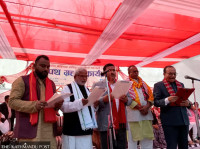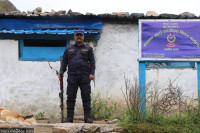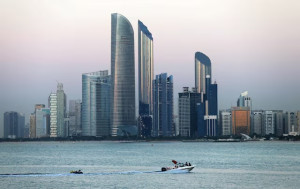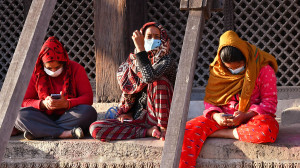National
Drug trafficking surges despite police’s success claims
As much as 21.11 percent of the total inmates across the country are jailed on drug trafficking charges.
Post Report
The number of drug traffickers has increased this year amid the Nepal Police’s claims they have intensified campaigns against drug uses.
Data from the Nepal Police’s Narcotic Division shows that out of the total 29,012 prisoners across the country, at least 6,126 were sent to jails on drug trafficking charges in the fiscal year 2024-25 until mid-May. It means 21.11 percent of the total inmates across the country are jailed on drug trafficking charges.
The number of such inmates is higher in this fiscal year compared to last fiscal 2023/24, when 5,911 out of 22,602 (20.73 percent) were in prison for drug trafficking.
According to the division’s data, this year, 402 people are in Kailali district prison on drug trafficking charges, the highest in any district. Sunsari and Kathmandu were the second and third districts, with 387 and 341 inmates for the charges. Likewise, 297 people were imprisoned in Morang and 271 in Jhapa for the same charges.
“We register cases against the drug traffickers, whereas we hand over the users to their guardians in most of the cases and urge them to keep them in a rehabilitation centre,” said an officer at the division. “A case under the Narcotic Drug Control Act could seriously damage the personal lives of the people, so we mostly don’t send the suspect to prison.”
According to the Narcotic Drug Control Act 1976, there is a provision of 3 months to 3 years of imprisonment for anyone convicted in the charge. The punishment may vary based on the variety of drugs trafficked, along with a financial penalty, among others, for the drug traffickers.
With the growing flow of narcotics, drug addiction among youths has become an increasing challenge in Nepal. Data from the narcotics division show that youths aged 16-30 are the major users of the drugs. Among them, around 3 to 5 percent are girls while the remaining are boys.
According to Janak Bahadur Shahi, spokesperson for the narcotics division, 80 percent of the youths falling into drug addiction are from urban areas. Likewise, many are influenced not just by family circumstances but by peer pressure.
“Most of the drug users are from middle-class families,” spokesperson Shahi said. “There is an impact of family background on drug users; however, peer pressure shares more blame than family background.”
Suman Khadka, the operator of Marga Darshak Sudhar Kendra located at Sorhakhutte, Kathmandu, who himself was a former drug user, said that people aged 13 to 50 are found using drugs.
The use of drugs is not a new phenomenon. Since the dawn of human civilisation, various societies have used substances for their pleasant and relaxing effects, religious rituals, or to enhance physical endurance under challenging circumstances.
Across the world, people are found to be consuming substances to ease pain, cope with sorrow, or experience a sense of pleasure.
Historically, drug use was linked to certain cultural norms while in recent decades there has been a significant shift in the use. Traditional people used cannabis, while in recent decades people are found to be using synthetic opioids and chemical substances.
Khadka said that the rapid growth of the pharmaceutical industry has contributed to a dramatic rise in the availability of drugs with properties that are prone to misuse.
“At present, the line between drug use and misuse has become increasingly blurred,” Khadka said. “Additionally, the methods of consumption have evolved, moving from smoking or ingestion to more dangerous practices like injection, among others.”
Inspector General of Police Deepak Thapa noted that the Kathmandu Valley is currently witnessing a surge in drug-related activities. In light of this, IGP Thapa stated that the police have been vigorously advancing a campaign focused on preventing and controlling narcotics throughout the Valley.
“The Kathmandu Valley Police Office is intensifying our campaign against drug abuse and trafficking across the entire Valley,” Thapa said on Thursday during a programme held in Kathmandu to mark the International Day Against Drug Abuse and Illicit Trafficking.
What is the Nepal Police doing to control drug trafficking, then?
Addressing the programme, IGP Thapa stressed the need to move forward with a well-formulated plan targeting both the demand and supply sides of the drug problem.
“As of the month between mid-May and mid-June in the current fiscal year, the Nepal Police seized over 65 percent cannabis compared to the same period in the previous fiscal year, over 77 percent opium than the corresponding period last fiscal, over 79 percent heroin, and over 53 percent pharmaceutical drugs compared to the previous fiscal year,” he stated.
He added that the issue of reducing, preventing, and controlling drug abuse has become increasingly challenging.




 19.12°C Kathmandu
19.12°C Kathmandu












%20(1).jpg&w=300&height=200)

